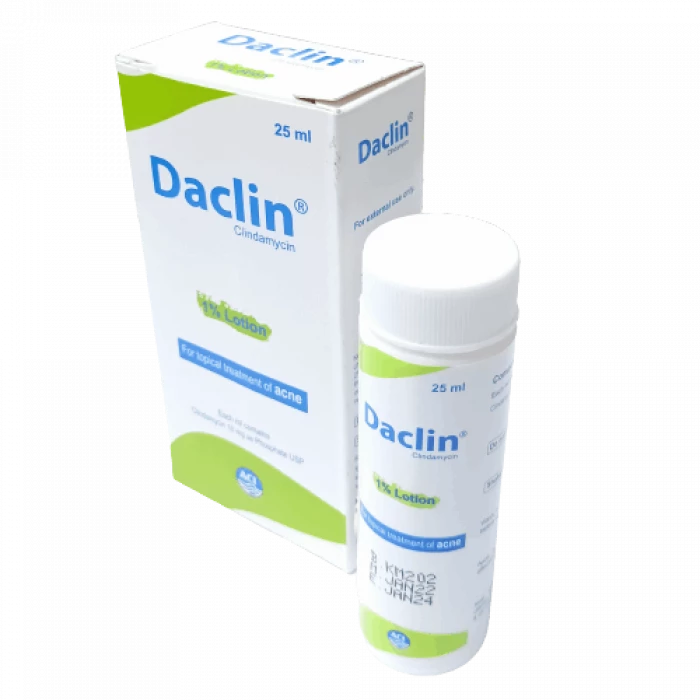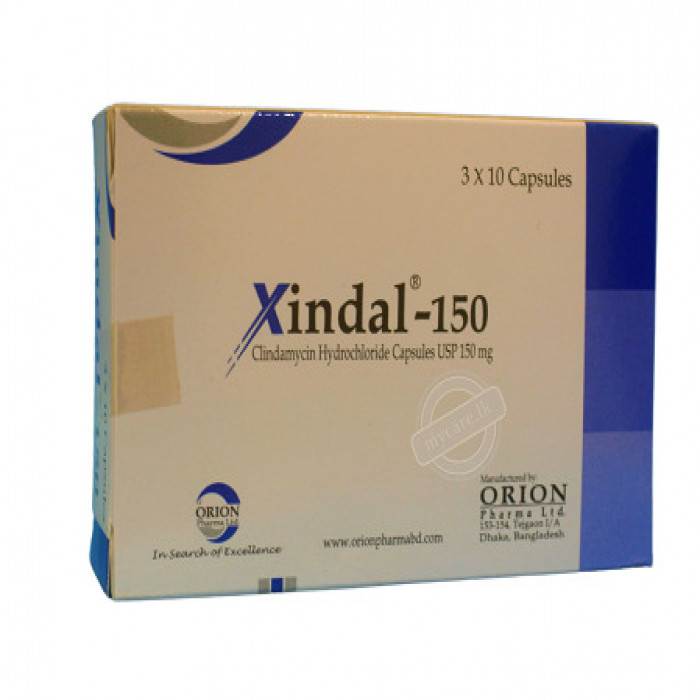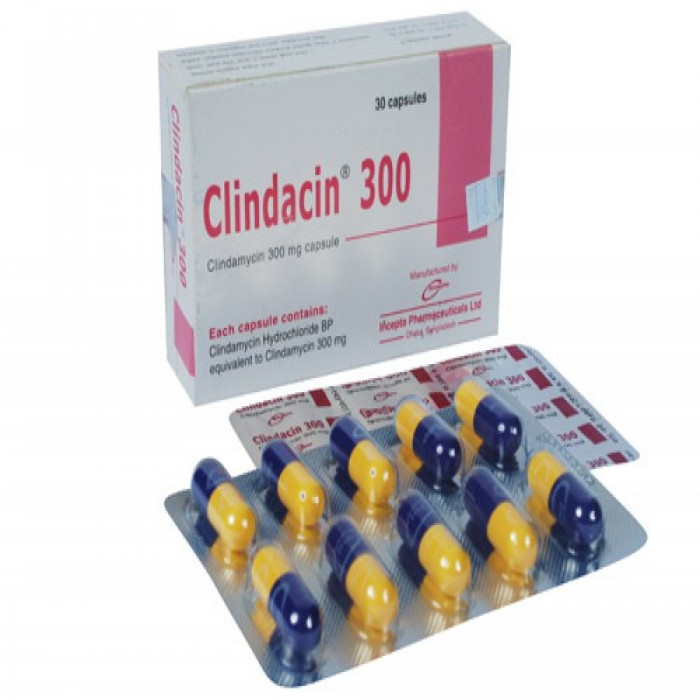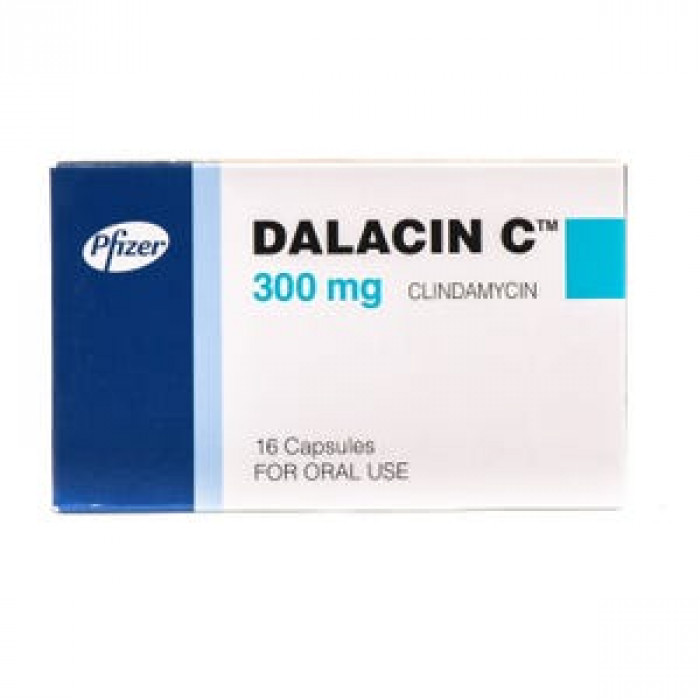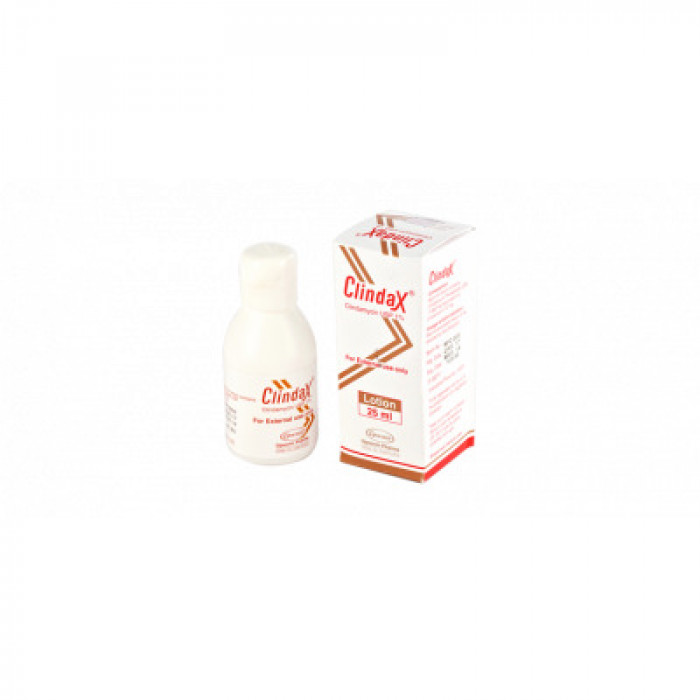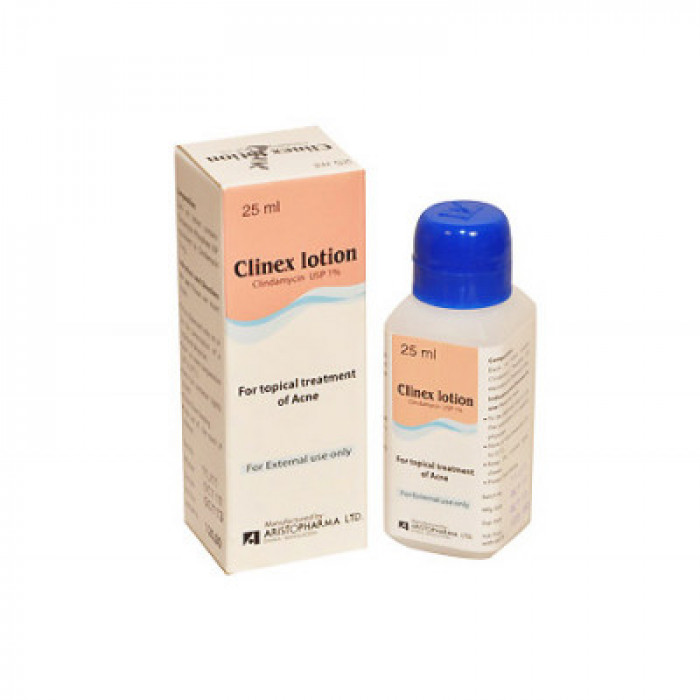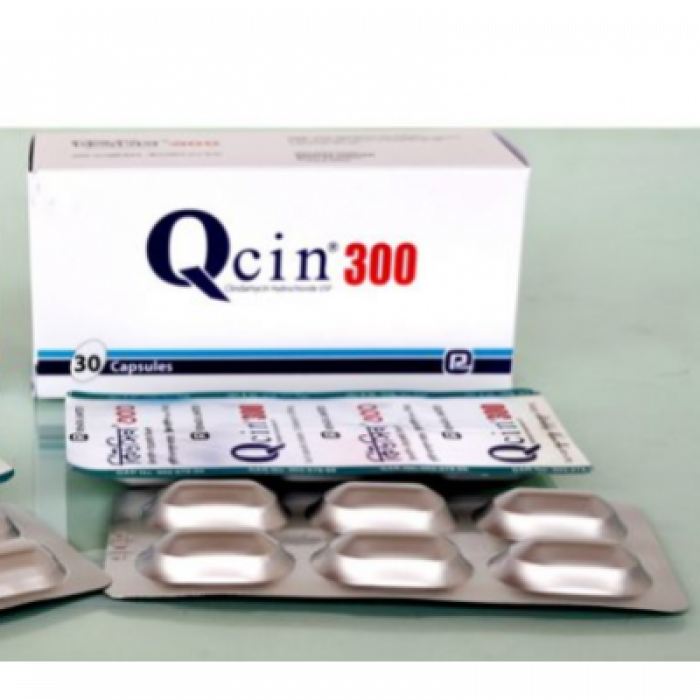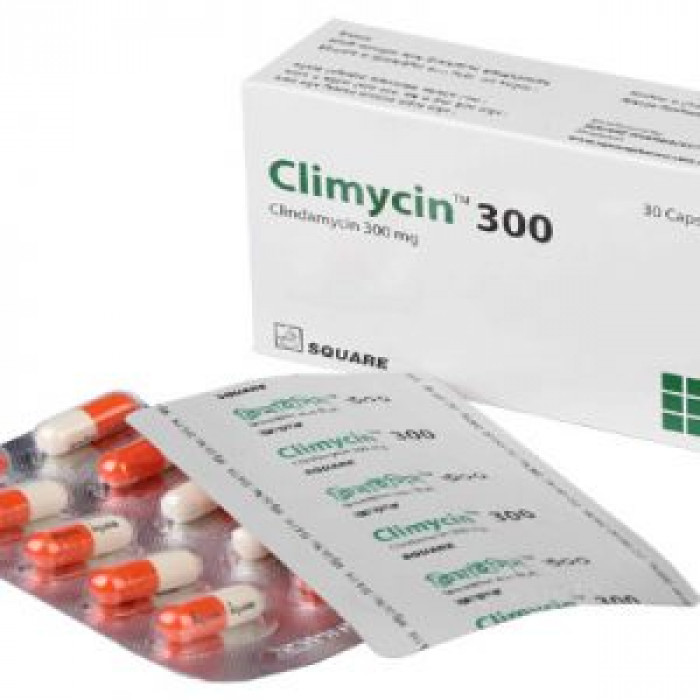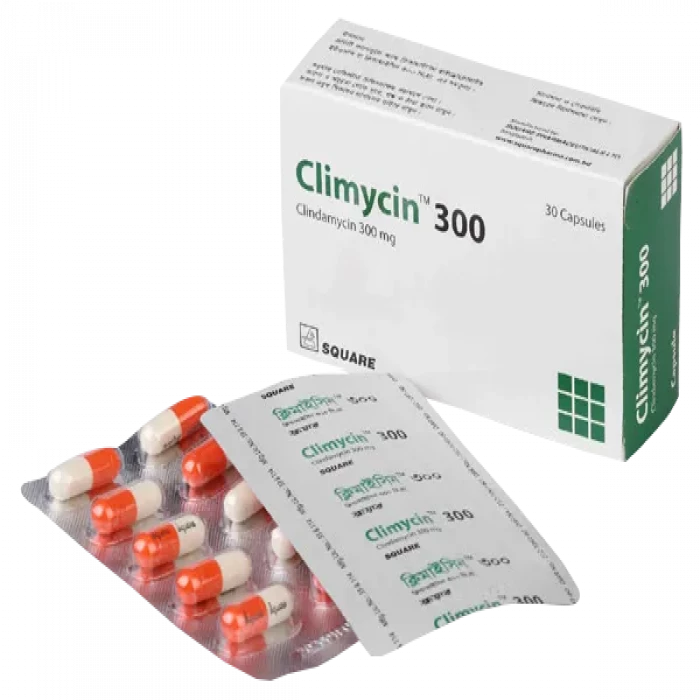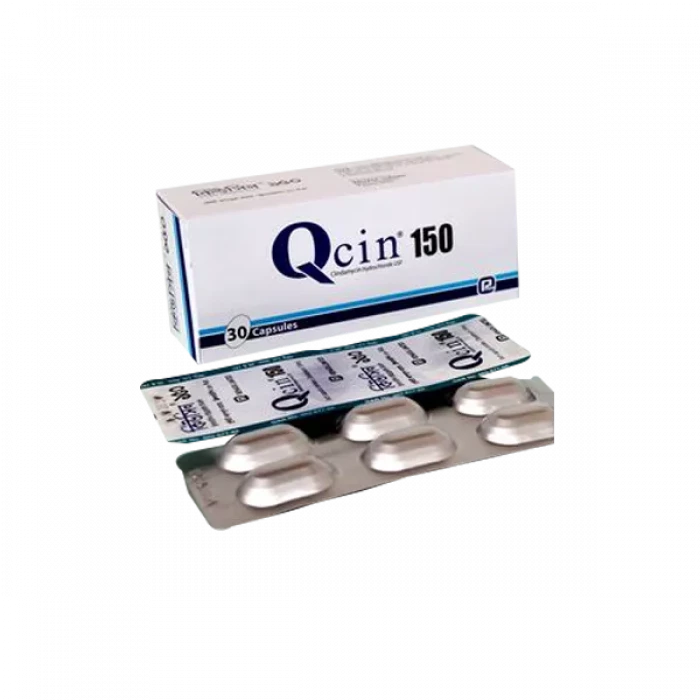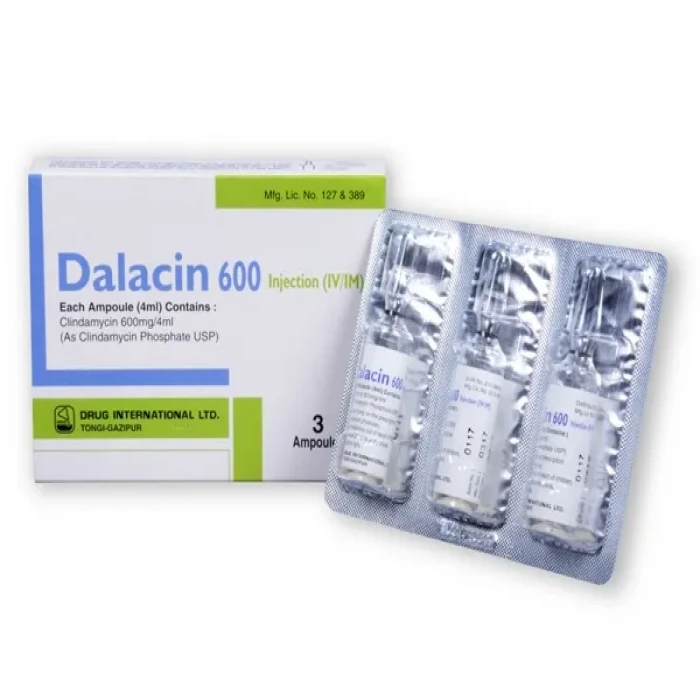
✔ 100% Authentic Product
👁️ Currently Viewing 2192
✅ Description:
Dalacin is an antibiotic that fights bacteria. It is used to treat acne, which appears as spots or pimples on your face, chest or back. This medicine works by attacking the bacteria that cause these pimples. Dalacin is only meant for external use and should be used as advised by your doctor. You should normally wash and dry the affected area before applying a thin layer of the medicine. It should not be applied to broken or damaged skin. Avoid any contact with your eyes, nose or mouth. Rinse it off with water if you accidentally get it in these areas. It may take several weeks for your symptoms to improve, but you should keep using this medicine regularly. Do not stop using it as soon as your acne starts to get better. Ask your doctor when you should stop treatment. Common side effects like minor itching, burning, or redness of the skin and oily skin may be seen in some people. These are usually temporary and resolve on their own. Consult your doctor if they bother you or do not go away. It is a safe medicine, but you should inform your doctor if you have any problems with your bowels (intestines). Also, inform the doctor if you have ever had bloody diarrhea caused by taking antibiotics or if you are using any other medicines to treat skin conditions. Consult your doctor about using this medicine if you are pregnant or breastfeeding.
Uses of Dalacin
Side effects of Dalacin
Common
Skin rash
How to use Dalacin
This medicine is for external use only. Use it in the dose and duration as advised by your doctor. Check the label for directions before use. Clean and dry the affected area and apply the gel. Wash your hands after applying, unless hands are the affected area.
How Dalacin works
Dalacin is an antibiotic. It works by preventing synthesis of essential proteins required by bacteria to carry out vital functions. Thus, it stops the bacteria from growing, and prevents the infection from spreading.
What if you forget to take Dalacin?
If you miss a dose of Dalacin, take it as soon as possible. However, if it is almost time for your next dose, skip the missed dose and go back to your regular schedule. Do not double the dose.

Quick Tips
You have been prescribed Dalacin for the treatment of acne.
You may have to use it for a long time before your acne starts to improve. Be patient and keep using it every day.
Wash your skin with a mild cleanser and pat it dry before applying Dalacin.
Apply it as a thin layer onto clean, dry, unbroken skin affected by acne.
It may cause minor burning, stinging or irritation when applied. Inform your doctor if this does not go away.
Avoid contact with your eyes, nose or mouth. Rinse it off with water if you accidentally get the cream in these areas.
If you think the area of skin you are treating has become more irritated and infected, you should stop using Dalacin and consult your doctor.

Brief Description
Indication
Dental infections, Respiratory tract infections, Skin and soft tissue infections, peritonitis, acne, anaerobic infections, endocarditis, Toxic shock syndrome, Bacterial vaginosis, Pelvic inflammatory disease
Administration
Cap: May be taken with or without food. Swallow whole w/ a full glass of water & in an upright position. Granules: Should be taken with food. IV Preparation Dilute 300 and 600 mg in 50 mL of D5W Dilute 900 mg in 50-100 mL of D5W Dilute 1200 mg in 100 mL of D5W IV Administration Intermittent IV infusion Infuse over 10-60 min at a rate not exceeding 30 mg/min 300 mg doses infuse over 10 min 600 mg doses infuse over 20 min 900 mg doses infuse over 30 min 1200 mg doses infuse over 60 min; no more than 1200 mg of drug should be given by IV infusion in 1 hr Continuous IV infusion May give continuous IV infusion instead of intermittent after first dose has been given by rapid IV infusion
Adult Dose
Adult: PO Serious anaerobic infections 150-300 mg 6 hrly, up to 450 mg 6 hrly for severe infections. Max: 1.8 g/day. Prophylaxis of endocarditis 600 mg 1 hr before dental procedure. IV Serious anaerobic infections 0.6-2.7 g/day in divided does, up to 4.8 g/day for severe infections. Toxic shock syndrome W/ penicillin G or ceftriaxone: 900 mg 8 hrly. Pelvic inflammatory disease W/ gentamicin: 900 mg 8 hrly. Bacterial Vaginosis: 300 mg PO q12hr for 7 days
Child Dose
Neonates (less than 1 month): 15 to 20 mg/kg/day in 3 to 4 equal doses. The lower effective dosage may be adequate for small prematures. Child: PO 10–25 mg/kg/day q8h 30–40 mg/kg/day for CA-MRSA, intra-abdominal infection, or AOM Parenteral (IV/IM) administration: 20–40 mg/kg/day q8h. The higher doses would be used for more severe infections.
Contraindication
Hypersensitivity.
Mode of Action
Clindamycin inhibits protein synthesis by reversibly binding to the 50S subunit of the ribosomal thus blocking the transpeptidation or translocation reactions of susceptible organisms resulting to stunted cell growth.
Precaution
Renal and hepatic diseases; pregnancy and lactation; GI disease; elderly, females, neonates, atopic patients. Regular monitoring of blood counts, liver and kidney functions. Lactation: Excreted in breast milk; manufacturer suggests discontinue drug or do not nurse (AAP Committee states compatible with nursing)
Side Effect
Diarrhoea, nausea, vomiting, abdominal pain; erythema multiforme, contact dermatitis, exfoliative and vesiculous dermatitis, urticaria; eosinophilia; local irritation, thrombophloebitis. Potentially Fatal: Gasping syndrome (neonates); pseudomembranous colitis.
Pregnancy Category Note
Pregnancy In clinical trials with pregnant women, systemic administration of clindamycin during the second and third trimesters, has not been associated with increased frequency of congenital abnormalities Clindamycin should be used during first trimester of pregnancy only if clearly needed; there are no adequate and well-controlled studies in pregnant women during first trimester of pregnancy. Because animal reproduction studies are not always predictive of the human response, this drug should be used during pregnancy only if clearly needed Lactation Clindamycin has been reported to appear in breast milk in range of 0.5 to 3.8 mcg/mL; clindamycin has potential to cause adverse effects on breastfed infant's gastrointestinal flora; if oral or intravenous clindamycin is required by nursing mother, it is not a reason to discontinue breastfeeding, but alternate drug may be preferred; monitor infant for possible adverse effects on gastrointestinal flora, such as diarrhea, candidiasis (thrush, diaper rash) or rarely, blood in stool indicating possible antibiotic-associated colitis The developmental and health benefits of breastfeeding should be considered along with mother's clinical need for clindamycin and any potential adverse effects on breastfed child from clindamycin or from underlying maternal condition
Interaction
May enhance the action of neuromuscular blocking agents (e.g. atracurium). May antagonise the effects of parasympathomimetics. May competitively inhibit the effects of macrolides, ketolides, streptogramins, linezolid and chloramphenicol. Increased coagulation tests (prothrombin time/INR) and/or bleeding w/ vit K antagonists (e.g. warfarin, acenocoumarol, fluindione).
⚠️Disclaimer:
At ePharma, we’re committed to providing accurate and accessible health information. However, all content is intended for informational purposes only and should not replace medical advice from a qualified physician. Please consult your healthcare provider for personalized guidance. We aim to support, not substitute, the doctor-patient relationship.




